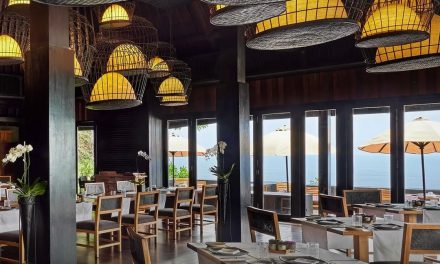Ah, the stunning rice terraces of Bali! When you think of this island paradise, images of lush green paddies cascading down hillsides probably dance in your mind. But beyond their breathtaking beauty lies a rich tapestry of cultural significance that is woven into the daily lives of the Balinese people. Let’s delve into this captivating aspect of Bali and explore why these terraces are so much more than just a pretty sight.
A Journey Through the Terraces
During my visit to Ubud, I had the opportunity to wander through the famed Tegalalang Rice Terraces. As I strolled along the narrow paths, I couldn’t help but feel connected to the land and its people. The locals were busy tending to their fields, and their laughter floated through the air like music. Witnessing this intimate interaction between the farmers and their environment illuminated the deep-seated relationship the Balinese have with their rice terraces.
The intricate systems of irrigation, known as subak, are not just farming methods; they embody the collective spirit of the community. In fact, subak is a cooperative water management system that dates back to the 9th century, regulating how water flows to the different rice fields. This tradition has been recognized by UNESCO as a cultural heritage, underscoring its importance in Balinese society.
The Heart of Balinese Culture: Rice
In Balinese culture, rice is so much more than food; it’s a symbol of life and prosperity. I remember sitting in a local warung (small restaurant) enjoying a plate of nasi goreng, and I couldn’t help but think about the significance of rice in that dish. Every grain of rice carries with it the hard work, dedication, and cultural practices of the island’s farmers.
Rice is woven into various rituals and ceremonies throughout the year. The planting and harvesting seasons are marked by traditional ceremonies, such as “Tumpek Uduh,” where offerings are made to the rice goddess, Dewi Sri. These moments of spiritual connection remind the Balinese that they are stewards of the land, and that the health of the rice crops is tied to their well-being.
A Lesson in Sustainability
Walking through the terraces also illuminated the concept of sustainability that underpins Balinese agriculture. The natural landscape is transformed through a unique technique that conserves water and maintains biodiversity. The practice of rotating crops and using organic fertilizers has allowed the terraced fields to thrive for generations. As I admired the vibrant green fields, I thought of how relevant this approach is to our modern struggles with sustainability and resource management.
Consider this: if each of us applied just a fraction of the principles found in the subak system—collaborating with our communities, respecting nature, and practicing sustainable living—imagine the difference we could make in our own environments!
Relatable Scenarios
Picture this: You’re hiking through the rice terraces, and you come across a farmer teaching his child how to plant rice. They laugh together as they fill their hands with mud, a task that has been passed down through generations. In that moment, you realize that you’re witnessing more than just farming; it’s a familial bond and a cherished tradition. You can’t help but smile and feel a sense of gratitude for being part of that beautiful scene.
Or maybe you find yourself dining under the stars at a restaurant overlooking the rice fields. As you savor your meal, the lights flickering softly against the backdrop of the terraces, you can hear the distant sounds of a gamelan orchestra. That perfect moment becomes a memory, as you understand that the rice terraces are part of a larger cultural narrative, one that is celebrated through art, music, and community.
Practical Advice for Visitors
If you’re planning a trip to Bali and want to experience the cultural significance of the rice terraces, here are some tips to enhance your journey:
1. Engage with Locals: Don’t hesitate to chat with the farmers! They are often welcoming and happy to share their knowledge about rice cultivation and local traditions.
2. Participate in Ceremonies: If you’re lucky enough to be in Bali during a rice-related ceremony, such as the harvest festival, take the time to participate. It’s a unique way to understand the cultural significance of rice.
3. Respect the Environment: When visiting the terraces, remember that these are working fields. Stay on designated paths to avoid causing damage to the crops and the landscape.
4. Learn the Basics of Subak: Before you go, consider researching the subak system. Understanding its historical and cultural context can enrich your experience.
5. Support Local Businesses: Enjoy meals at local warungs and buy handmade crafts from Balinese artisans. Your support helps sustain the community and their traditions.
In Conclusion
The rice terraces of Bali are a living testament to the island’s rich culture and agricultural heritage. They offer a glimpse into a world where nature, community, and spirituality intertwine harmoniously. Whether you are contemplating the serene beauty of the fields or engaging in conversations with the farmers, the terraces resonate with stories of perseverance, tradition, and sustainability.As we navigate our modern lives, let the wisdom of Bali’s rice terraces inspire us to cultivate our own connections to culture, community, and the earth. So, next time you savor a bowl of rice, think about the journey it took to get to your table, and appreciate not just the meal, but the legacy it carries with it.






